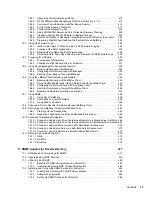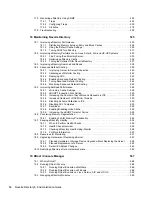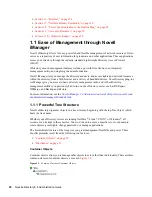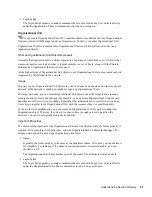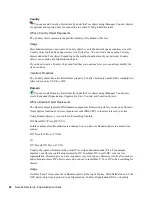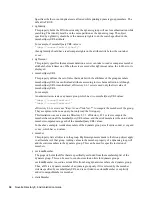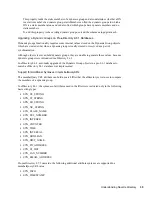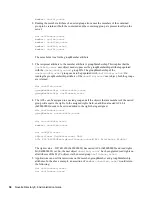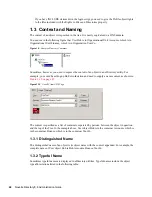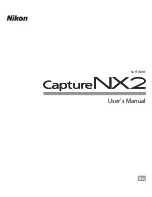
Understanding Novell eDirectory
27
no
vd
ocx
(e
n)
6 Ap
ril 20
07
Login Script
The Login Script property contains commands that are executed by any User objects directly
under the Organization. These commands are run when a user logs in.
Organizational Unit
You can create Organizational Unit (OU) container objects to subdivide the tree. Organizational
Units are created with iManager under an Organization, Country, or another Organizational Unit.
Organizational Units can contain other Organizational Units and leaf objects such as User and
Application objects.
What an Organizational Unit Object Represents
Normally the Organizational Unit object represents a department, which holds a set of objects that
commonly need access to each other. A typical example is a set of Users, along with the Printers,
Volumes, and Applications that those Users need.
At the highest level of Organizational Unit objects, each Organizational Unit can represent each site
(separated by WAN links) in the network.
Usage
The way you use Organizational Unit objects in your tree depends on the size and structure of your
network. If the network is small, you might not need any Organizational Units.
For larger networks, you can create Organizational Unit objects under the Organization to make
resources easier to locate and manage. For example, you can create Organizational Units for each
department or division in your company. Remember that administration is easiest when you keep
User objects together in the Organizational Unit with the resources they use most frequently.
For networks with multiple sites, you can create an Organizational Unit for each site under the
Organization object. That way, if you have (or plan to have) enough servers to partition the
directory, you can do so logically along site boundaries.
Important Properties
The most useful properties for the Organizational Unit are listed below. Only the Name property is
required. For a complete list of properties, select an Organizational Unit object in iManager. To
display a description for each page of properties, click
Help
.
Name
Typically, the Name property is the same as the department name. Of course, you can shorten it
for simplicity. For instance, if the name of your department is Accounts Payable, you can
shorten it to AP.
The Organizational Unit name becomes part of the context for all objects created under it.
Login Script
The Login Script property contains commands that are executed by any User objects directly
under the Organizational Unit. These commands are run when a user logs in.
Summary of Contents for EDIRECTORY 8.8 SP2
Page 4: ...novdocx en 6 April 2007...
Page 116: ...116 Novell eDirectory 8 8 Administration Guide novdocx en 6 April 2007...
Page 128: ...128 Novell eDirectory 8 8 Administration Guide novdocx en 6 April 2007...
Page 255: ...256 Novell eDirectory 8 8 Administration Guide novdocx en 6 April 2007...
Page 406: ...408 Novell eDirectory 8 8 Administration Guide novdocx en 6 April 2007...
Page 563: ...566 Novell eDirectory 8 8 Administration Guide novdocx en 6 April 2007...
Page 573: ...576 Novell eDirectory 8 8 Administration Guide novdocx en 6 April 2007...
Page 601: ...604 Novell eDirectory 8 8 Administration Guide novdocx en 6 April 2007...

